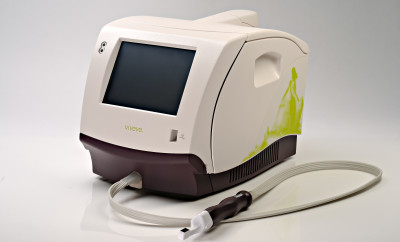
Health x Wellness
10 Causes of Abnormal Vaginal Lumps and Bumps
Some women may develop lumps or bumps in the vaginal area some time during their lives.
The severity of the condition, indicated by these lumps and bumps, can be classified into three categories:
- Harmless
- Infection or sexually-transmitted disease
- Malignancy
For the most part, these lumps or bumps are harmless. The following conditions fall under this group.
1. Cysts
Cysts can occur anywhere in the body. They are sacs, that range in size, filled with liquid or other substances. In the vaginal area, these cysts are usually benign and painless unless infected. It would feel like a small pebble just underneath the skin of the vulva.
There are two kinds of cysts:
a. Sebaceous Cysts
Sebaceous cysts result from the blocked hair follicles and ingrown hair when shaving or waxing. Most of these cysts do not require treatment and can be ignored if it does not cause any problems. However, some may need a small incision if they enlarge or become infected.
b. Bartholin Cysts
When the Bartholin gland (a gland in the vaginal and vulva region) becomes blocked and swells, this will cause a Bartholin cyst to form. The cyst is also harmless unless it becomes infected and turns into an abscess (a swollen area containing pus). In such cases, a trial of antibiotics usually is effective. In some cases, minor surgery may be necessary.
2. Molluscum contagiosum
A virus called pox virus causes molluscum contagiosum. It is a skin infection which causes multiple tiny bumps to spread across the area of infected skin. These harmless bumps or raised lesions are pearly white to skin-coloured and will eventually vanish after 1-2 years.
Molluscum contagiosum commonly appears in children and other parts of their bodies. However, it may pose as a sign of an STD when it occurs in adults. It is then advised for these people to get tested for other STDs.
Effective treatment options available to cure this particular type of molluscum contagiosum include:
a. Electrosurgery
b. Freezing (liquid nitrogen)
c. Topical imiquimod (5%) cream
3. Vestibular papillomatosis (VP)
VP is a skin condition whereby multiple shiny small papules appear over the skin of the inner labia and vaginal opening. Similar to pearly penile papules (PPP) in men, VP is a normal variant of female genitalia; therefore treatment is not necessary.
It should be noted that VP is commonly mistaken as genital warts because of their similar appearance. Genital warts is a type of sexually-transmitted disease. Therefore it is essential to have a correct diagnosis of the condition as a measure to prevent undue stress or prolonged deterioration.
4. Fordyce spots
Fordyce spots are enlarged oil glands materialising as small white to yellow lumps over the inner labia. These spots can also appear on the lining of the mouth and occasionally on the penis in men. They are completely painless and harmless.
The condition where lumps and bumps associated with an infection is folliculitis. Other conditions that are STD-related include genital warts, syphilis and herpes.
5. Folliculitis
Folliculitis is the skin condition where the hair follicles in the labia region become inflamed and infected, causing tender red spots containing pus to surface. The hair follicles become inflamed from bacterial, fungal or even viral infection (e.g. herpes), due to situations that irritate ingrown hair, like shaving or waxing. The treatment is dependent on the type of infection.
6. Genital warts
Genital warts is a sexually-transmitted disease caused by the human papillomavirus (HPV), usually, type 6 and 11. These warts present as small, skin-coloured bumps that can either develop into one single lump or more commonly into multiple lumps. Genital warts are highly contagious through skin-to-skin contact. Depending on the individual, the warts may go away, remain present or spread and increase in amount. Even without developing these warts, the individual can still be a carrier of the HPV virus. There are vaccinations now available to protect you from certain strains of HPV including type 6 and 11.
7. Syphilis
Syphilis is a sexually-transmitted disease that is caused by a bacterial infection. From this, a chancre, a painless sore, will appear in the genital or mouth area. The sore can eventually go away untreated in a few weeks. However, this will lead to the development of severe complications because the infection remains.
8. Genital herpes
Genital herpes is a contagious sexually-transmitted disease appearing as multiple painful blisters or ulcers clustered in the genital area. The infection can spread quickly to sexual partners, even with the use of condoms.
Although there is currently no cure for the infection, there are different treatments, like antiviral medications, to prevent and control recurring outbreaks of blisters.
Lumps and bumps can also be a malignant growth, and potentially a sign of cancer.
9. Vaginal cancer
Vaginal or vulvar cancer can be presented as a lump or bump in the vaginal region. Besides the lumps, this type of cancer is also accompanied by other symptoms, including:
a. Abnormal vaginal bleeding
b.Unusual vaginal discharge
c. Pain during intercourse
In such cases, a pelvic examination and pap smear is done to look for any red flags. A pelvic examination and a pap smear test is done to check for signs of early changes and cancer.
If the results are positive, the doctor will then discuss the next steps for treatment.
10. Vaginal Melanoma
Melanoma is a type of skin cancer arising from pigmented cells. 2% of melanoma are diagnosed in the vagina or vulva. This cancer is more prevalent in women older than 50.
Vaginal melanoma appears as a pigmented lump in the vaginal area. Other non-specific symptoms include itching, bleeding and pain.
Article contributed by Dr Michelle Chia. She is the resident doctor at DTAP Clinic @ DUO Galleria, specialising in women’s health. She has extensive experience in managing a variety of women’s health and general gynaecology issues as well as antenatal care for pregnancy.
Dr Tan & Partners clinic (DTAP Clinic) was established in 2005 at Robertson Walk (Singapore). The DTAP clinic @ Robertson is an Anonymous HIV test site approved by Ministry of Health (Singapore) and supported by Health Promotion Board. They encourage both locals and foreigners at risk of HIV to come forth for HIV testing, without the need to provide their details, NRIC or passport, addresses and contacts numbers.








